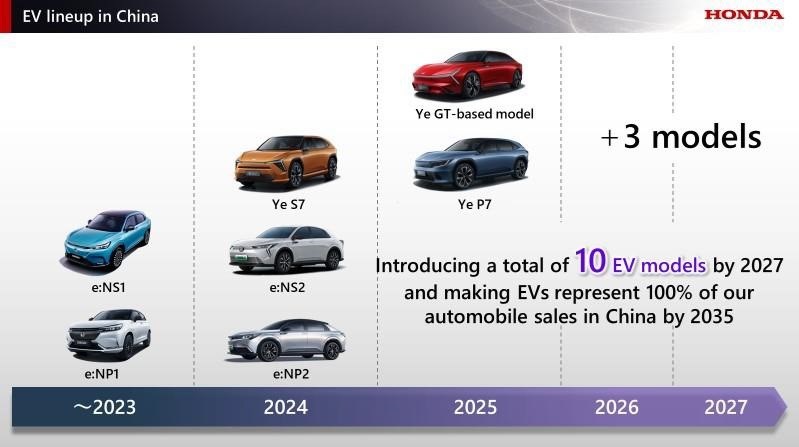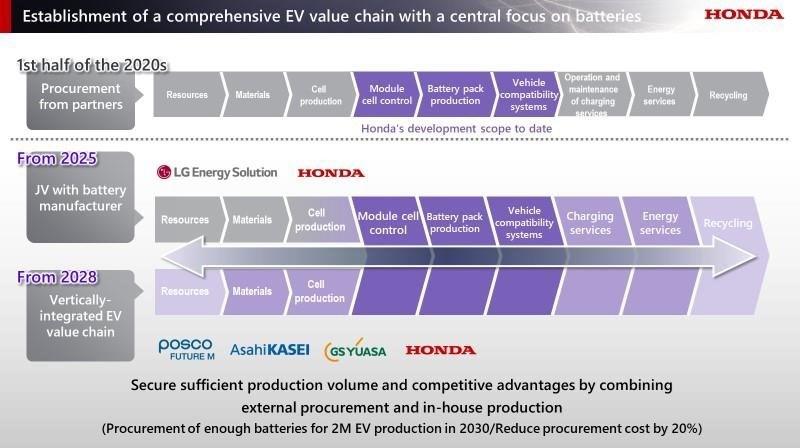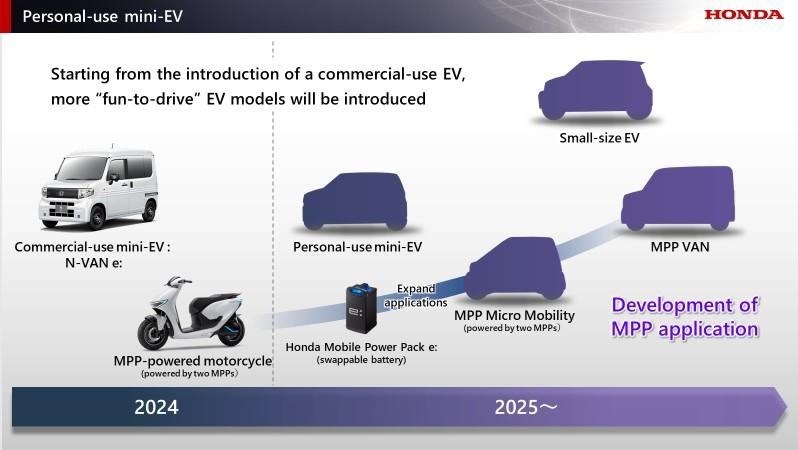
Honda Business Briefing on electrification initiatives and investment strategy summary
London, 16 May 2024, (Oilandgaspress) – Honda Motor Co., Ltd. Director, President and Representative Executive Officer (Global CEO) Toshihiro Mibe today held a press briefing on Honda initiatives centering on automobile electrification.
Following is a summary of his formal remarks:
Honda approach to electrification and initiatives toward achieving its targets:
The environment surrounding automobile electrification is undergoing dramatic changes, and in some regions, the sense of a slowdown in EV market growth is gaining attention. There are various approaches toward Honda’s 2050 goal of carbon neutrality. For example, to achieve “zero environmental impact” in powering large mobility products such as aircraft and large watercraft, the use of SAF*1 and e-fuel is being viewed as a high potential solution, from the perspective of range.
On the other hand, Honda has not changed its belief that EVs are the most effective solution in the area of small mobility products such as motorcycles and automobiles. Looking at the trend from a longer-term perspective, Honda is confident that the EV shift will continue to proceed steadily. Without getting too caught up in the current changes in the situation, Honda must look ahead to the period of EV popularization, which will begin in the second half of the 2020s and build a strong EV brand and a strong EV business from a medium- to long-term perspective.
As of 2030, Honda plans to make EVs and FCEVs represent 40% of its global auto sales, and to produce more than 2 million units of EVs. Working toward this future, Honda will steadily pursue the following three initiatives, while making investment decisions at the right timing:
1) Introduction of attractive EVs only Honda can offer
2) Establishment of a comprehensive EV value chain with a central focus on batteries
3) Advancement of EV production technologies and facilities
Through these initiatives, Honda is aiming to achieve a return on sales (ROS) of 5% for its EV business as of 2030 to further increase its profit margin to make its BEV business self-sustaining.
*1 SAF: sustainable aviation fuels
1-1. Introduction of attractive EVs only Honda can offer
The Honda 0 Series, which will play a key role in the Honda EV strategy, will be a completely new EV series Honda will create from “zero” with a new EV development approach of “Thin, Light, and Wise.” In January of this year, at CES, two concept models were unveiled, namely Saloon and Space-Hub. As for Saloon, which will become a flagship model of the series, Honda is planning for the market launch of a model very similar to this concept model, in 2026.
n “Thin”
Honda will strive to offer a value to our customers with “space” that excels in both driving performance and comfort, embodying Honda’s long-cherished M/M (Man Maximum, Machine Minimum) concept in the EV era.
With the adoption of a new dedicated platform for mid- to large-size EVs and a further advanced power unit, a package featuring unprecedented styling with a low vehicle height and a short overhang will be realized.
With the adoption of a newly-developed compact e-Axle and the world’s top-class ultra-thin battery pack, the motor room and floor will be made thin. Moreover, both the low vehicle height styling and a spacious and comfortable interior space will be achieved through the application of technologies Honda has amassed through our long history of car making. This includes optimization of the parts layout, reduction of the number of parts, as well as adoption of Honda’s original collision control technology, and the adoption of body frames that combine excellent design and performance.
Furthermore, the cabin will be designed to realize more comfort and more fun of driving, featuring an intuitive user interface and exhilarating visibility.
n “Light”

For its new EV series models, Honda will pursue sporty driving that leads to the “joy of driving,” which has been a commitment in Honda’s car making.
In addition to lighter body frames, the new EV series models will adopt an all-new power unit, which was made lighter and thinner by applying Honda’s original technologies amassed through the development of F1 machines and HEV models. This will enable Honda to reduce the overall vehicle weight by approximately 100kg (220 pounds) compared to initial Honda EVs.
Heavy components such as the battery and power unit will be placed low and in the center of the vehicle body to realize a low center of gravity, resulting in stable vehicle behavior and a nimble and sporty driving performance.
As a technology to realize vehicle control at the will of the driver, a further advancement was achieved for the motion management system developed based on posture control technology that Honda has amassed through the development of its original robotics technologies.
By combining the highly efficient power unit and excellent aerodynamic technology Honda has amassed through motorsports activities, the new EV series models will achieve both a sporty driving experience unique to Honda and the world’s top class electricity efficiency performance. With that, Honda will strive to realize sufficient range of more than 300 miles (480 km)*2 for each of the Honda 0 Series models.
n “Wise”
Equipped with an original vehicle OS, Honda 0 Series models will offer a digital UX optimized for each individual customer, in conjunction with the advancement of connected technologies. Vehicle functions will be continuously updated with OTA (over-the-air) updates, which will further advance our EVs as attractive products only Honda can offer.
Honda will independently develop the underlying E&E architecture, the vehicle OS which is the upper layer of the overall architecture, as well as various applications that will be on the vehicle OS. Honda will apply original customization to the SoC (system-on-chip) semiconductors which will be installed in Honda 0 Series models. For example, such customized SoC will feature AI, which is essential for the advancement of automation and intelligence, yet helps lower power consumption.
The EV models we will introduce in the second half of the 2020s will continuously advance in a way that they will possess intelligence to be more attentive to the preferences and needs of each individual customer.
The Honda 0 Series models which will be introduced in the second half of the 2020s will adopt a centralized architecture, which will consolidate multiple ECUs which are serving individual functions to control the vehicle’s systems, to a core ECU and serve as a single “brain” for the entire vehicle. This will align each and every function and make it possible to speedily offer new and inspiring experiences never before possible. With that, Honda EV models will continuously advance in a way that they will possess intelligence to be more attentive to the preferences and needs of each individual customer.
As for AD/ADAS (automated driving and advanced driver assistance systems), Honda is aiming to offer a seamless mobility experience, not only inside the vehicle but the entire process from the moment the customer enters the vehicle until they exit the vehicle. To this end, the AD/ADAS will be advanced to be more in tune with human sensibilities by adopting further advanced sensing technologies and intelligence technologies including AI. As for driver-assistive technologies, the Level 3 automated driving technology, which Honda put into practical use ahead of other companies around the world, will be utilized to make automated driving functions available in a broader speed range on expressways, as well as on regular roads. Moreover, by providing customers with consistent support for their entire mobility experience, including pickup arrangement and parking of the vehicle at places away from home, Honda will realize “the joy and freedom of mobility” with less stress to our customers.

Honda will begin battery production with its JV partners.
In the U.S., in 2025, the joint venture EV battery plant with LG Energy Solution will begin production with a capacity of 40GWh of batteries per year. By building a solid value chain with its partner, which will have the largest scale in North America, Honda will realize a competitive battery cost. Moreover, the lightweight and compact battery packs, which will be produced with Honda’s high-density packaging technologies, will be installed in the Honda 0 Series models and contribute to enhance the product value of those models.
In addition to EV production, Honda will expand the scope of its business into the battery life cycle business, which includes the areas of charging service, energy service and reuse/recycle. Honda will build a stable business foundation by expanding the areas of battery business Honda will do in-house.
n The popularization period for EVs: in the second half of the 2020s
Honda will further expand its scope of battery business and strive to build a vertically-integrated and comprehensive EV value chain with a central focus on batteries, that includes all aspects of EV production, from procurement of raw materials mainly for batteries, through production of finished EVs, as well as battery reuse and recycling.
In Canada, Honda will begin in-house production of the EV battery being co-developed with GS Yuasa. As for key battery materials, in Canada, Honda will proceed to internalize production by producing cathode materials with POSCO Future M, and separators with Asahi Kasei, at our respective new joint venture plants to be constructed.
Moreover, Honda is aiming to build a comprehensive value chain with an eye toward secondary use and the recycling of EV batteries. With that, in addition to optimizing battery prices and achieving a stable supply, Honda will ensure the competitiveness of its entire value chain, including the upstream and downstream areas of EV battery business.
With these initiatives, in 2030, Honda will reduce the cost of the battery to be procured in North America by more than 20% compared to the cost of current batteries. As for batteries necessary for the production of approximately 2 million units of EVs planned for 2030, we already have a positive outlook to secure enough batteries
1-3. Advancement of EV production technologies and facilities
Information Source: Read full article
Oil and gas press covers, Energy Monitor, Climate, Renewable, Wind, Biomass, Sustainability, Oil Price, LPG, Solar, Marine, Aviation, Fuel, Hydrogen, Electric ,EV, Gas,

